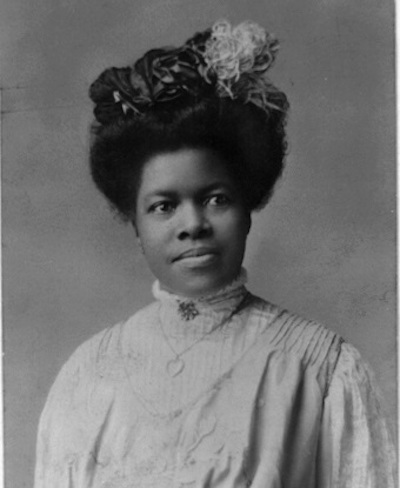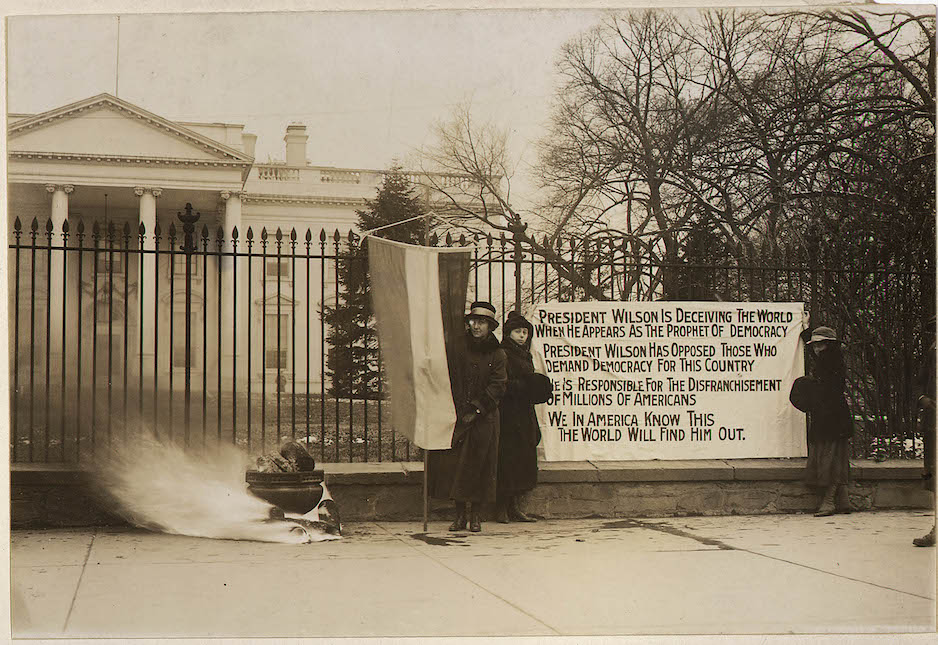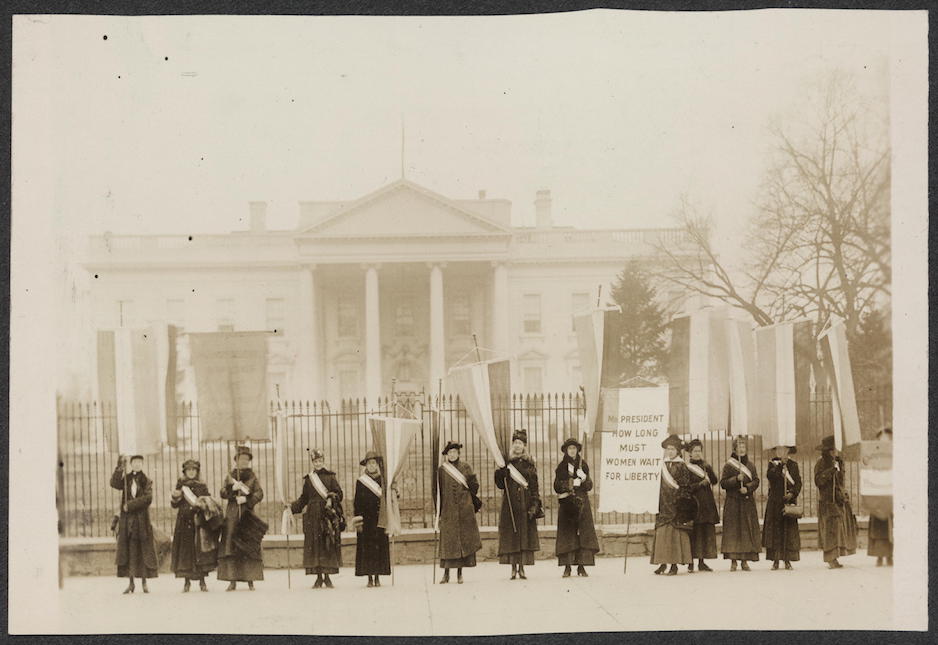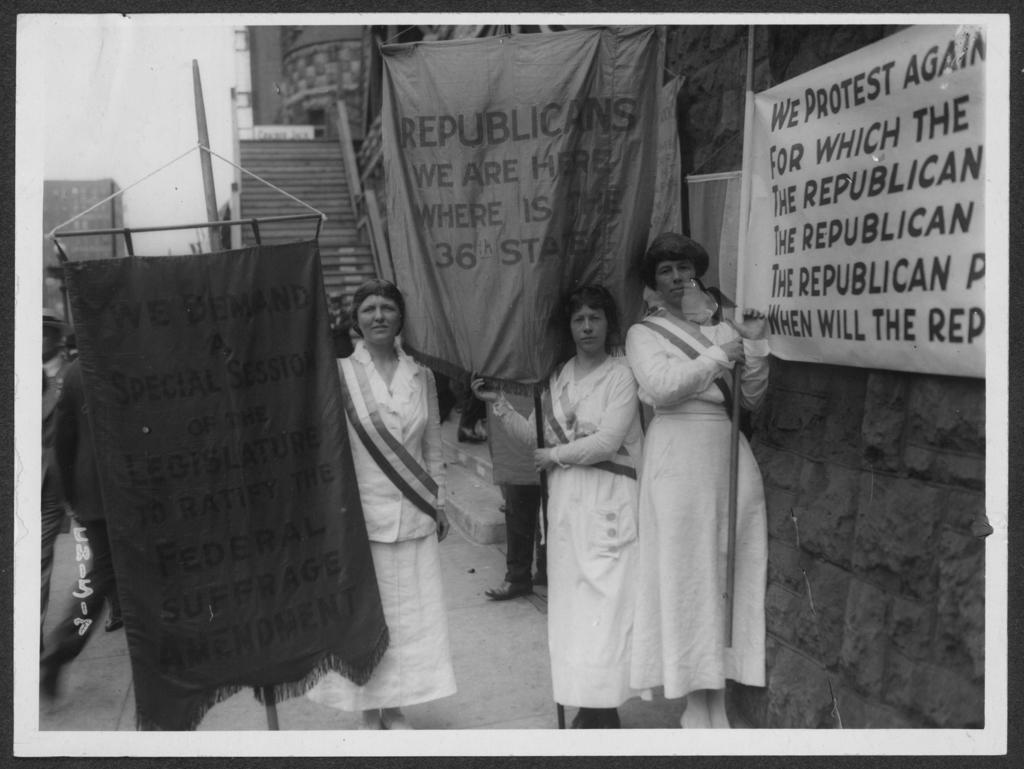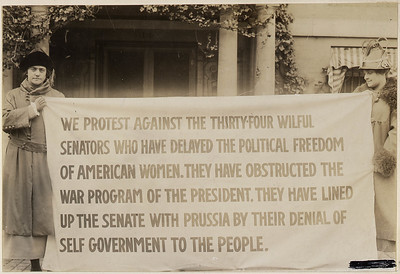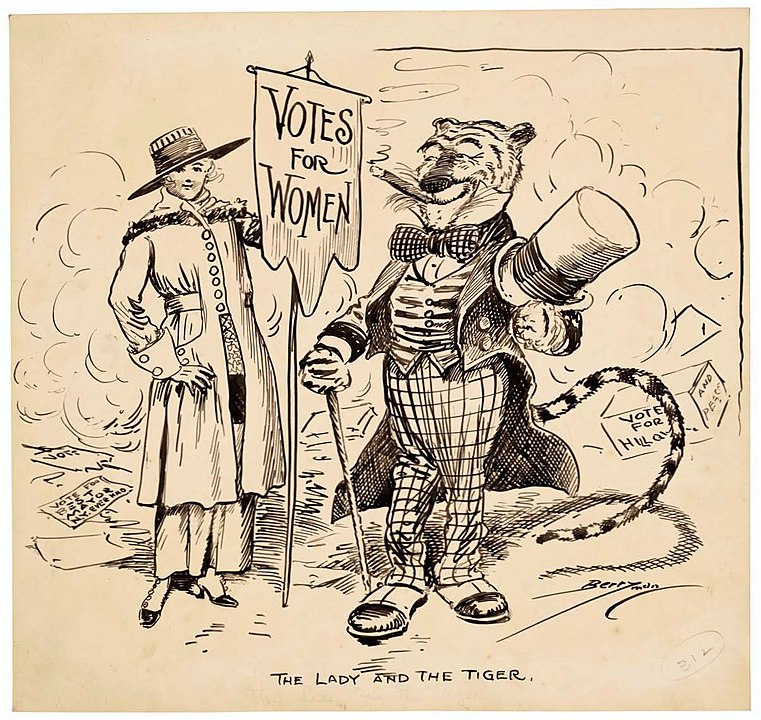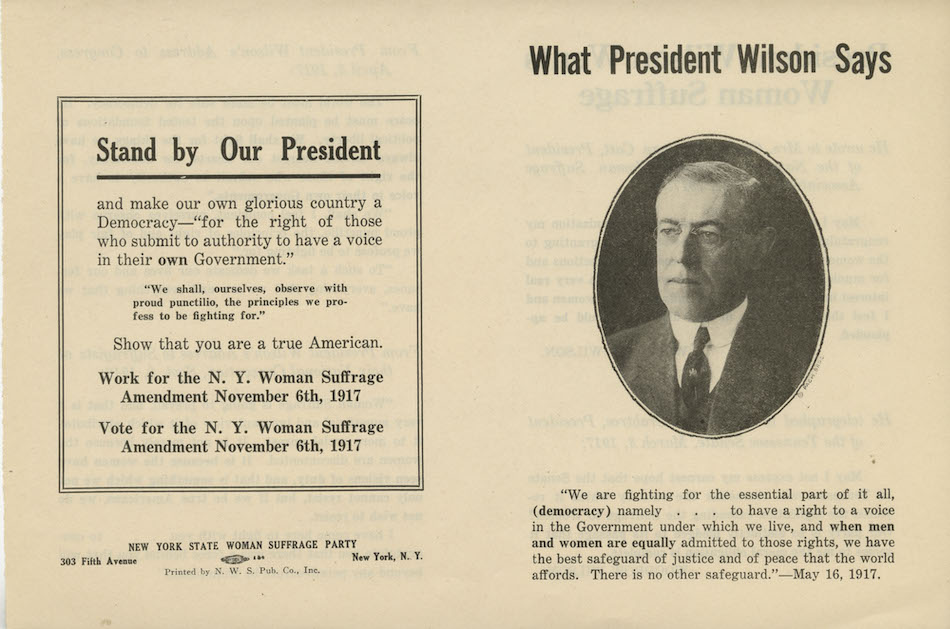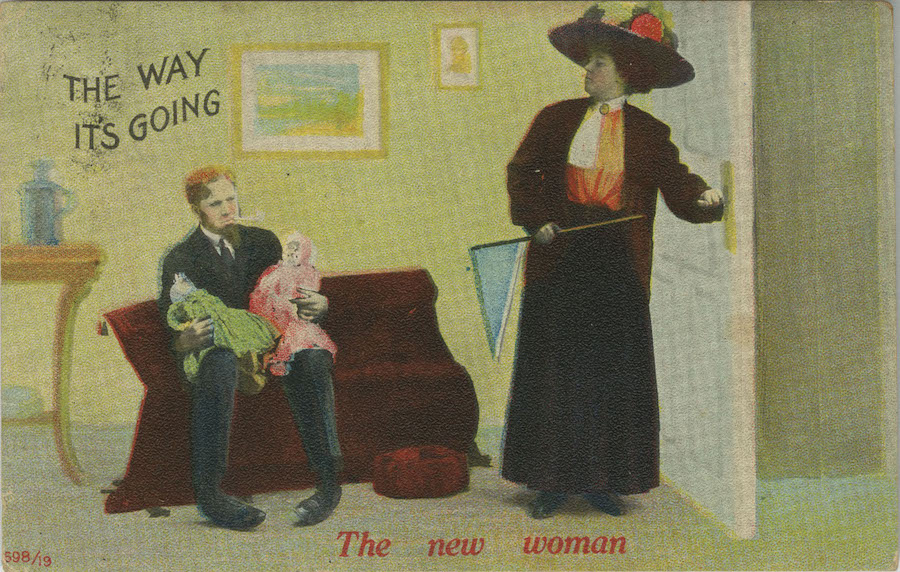Women's Suffrage- The 19th Amendment
![]()
1848
The Seneca Falls Convention convenes. Women discuss women's rights and other social reforms. The convention is the first of its kind.
![]()

A list of women and men who attended the Seneca Falls convention and signed the Declaration of Sentiments.
At the convention a group of about 300 women and men brainstorm and produce The Declaration of Sentiments, creating the suffragettes’ agenda for generations to come. The convention and The Declaration mobilize suffragettes across America.
The women in attendance included Lucretia Mott, Harriet Cady Eaton, Margaret Pryor, Elizabeth Cady Stanton, Eunice Newton Foote, Mary Ann M'Clintock, Margaret Schooley, and Martha C. Wright to name just a few.
The men in attendance included Richard P. Hunt, Samuel D. Tillman, Justin Williams, Elisha Foote, Frederick Douglass, Henry W. Seymour, David Spalding, and William G. Barker to name just a few.
Image courtesy of PBS
![]()
1850
The first National Women's Rights Convention is held. A strong alliance is formed between the abolitionist movement and women's rights activist.
![]()
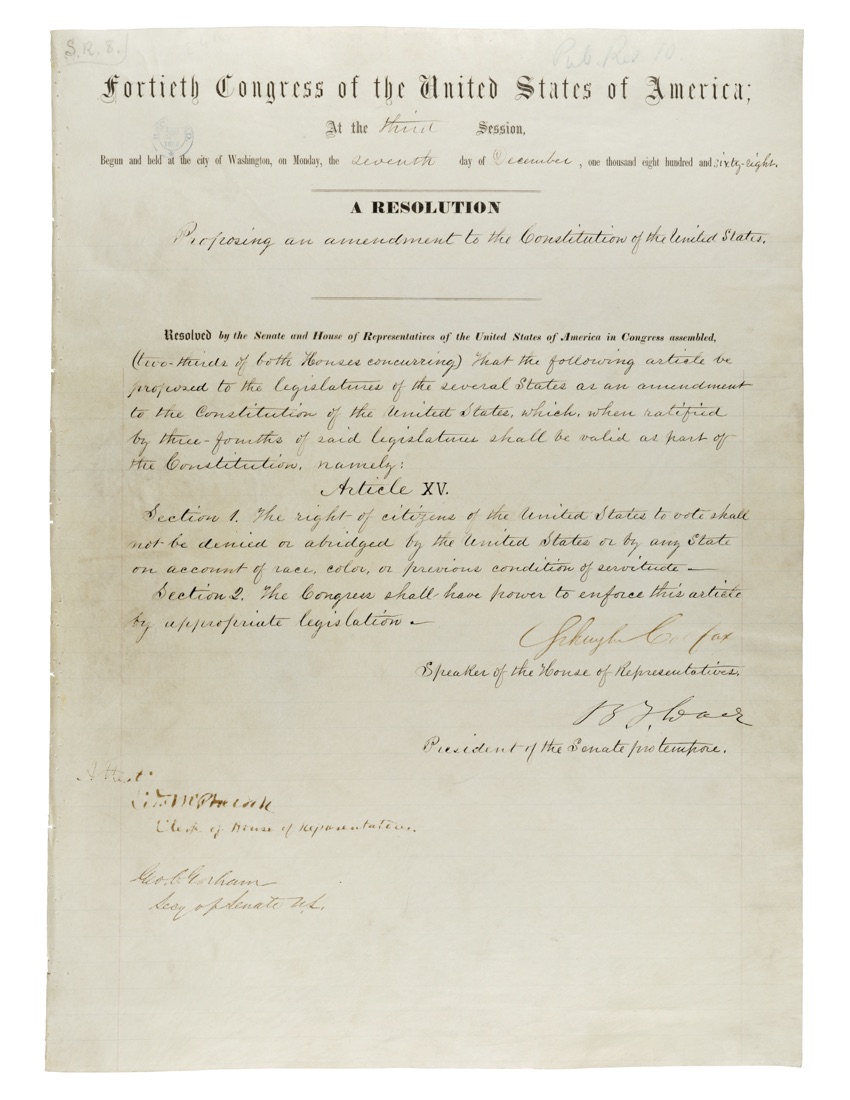
Notable attendees include Frederick Douglass, Paulina Wright Davis, Abby Kelley Foster, William Lloyd Garrison, Lucy Stone, and Sojourner Truth. When the Civil War begins in 1861, civil rights campaigns are put on hold and all energy is directed towards the war.
The Fifteenth Amendment is passed in 1868, granting black men the right to vote in elections. In response, two iconic political groups are formed to advocate for women’s suffrage: National Woman Suffrage Association (NWSA) and The American Woman’s Suffrage Association (AWSA). Susan B. Anthony and Elizabeth Cady Stanton form the more radical NWSA and argued that the Fifteenth Amendment should be abandoned and replaced with a universal suffrage amendment. This disagreement led Frederick Douglas to abandon the partnership between the abolitionists and the women’s rights movement. The American Woman’s Suffrage Association (AWSA), the more moderate of the groups, is founded by Lucy Stone, her husband Henry Blackwell, and Julie Ward Howe. AWSA openly supports the Fifteenth Amendment and is successful in winning suffrage in several states.
Woman's Co-Operation Essential to Pure Politics is a leaflet that was distrubuted in Boston in 1885. The leaflet was written by Republican senator George F. Hoar in response and support to the Suffrage movement.
We are here to ask two very simple things:
First, That in counting the votes in our elections, the vote of women shall be counted.
Second, That when the people vote for public officers, or they are otherwise appointed, if a woman seem to be the fittest person for the office, she may be selected; and that is all.
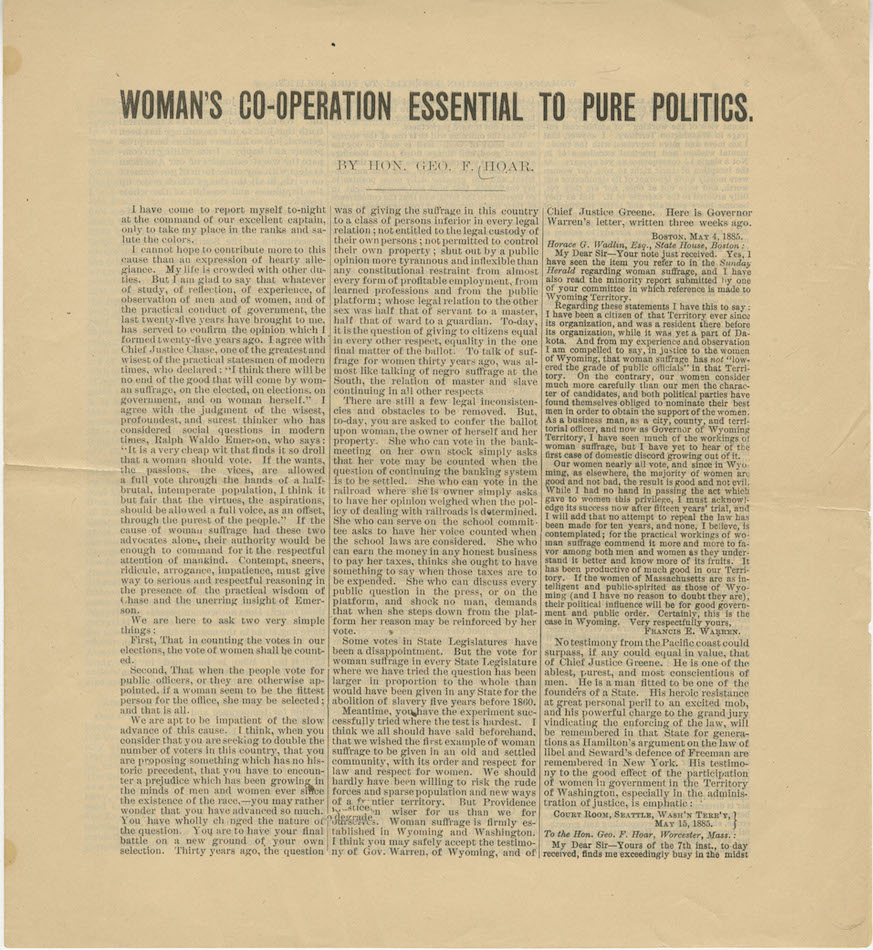 Florida Gulf Coast University Bradshaw Library's Archives and Special Collections Permanent Collection.
Florida Gulf Coast University Bradshaw Library's Archives and Special Collections Permanent Collection.![]()
1890-1925
The Progressive Era begins, changing women's roles in society. Women are granted more economic freedom and masses of women begin attending college.
![]()
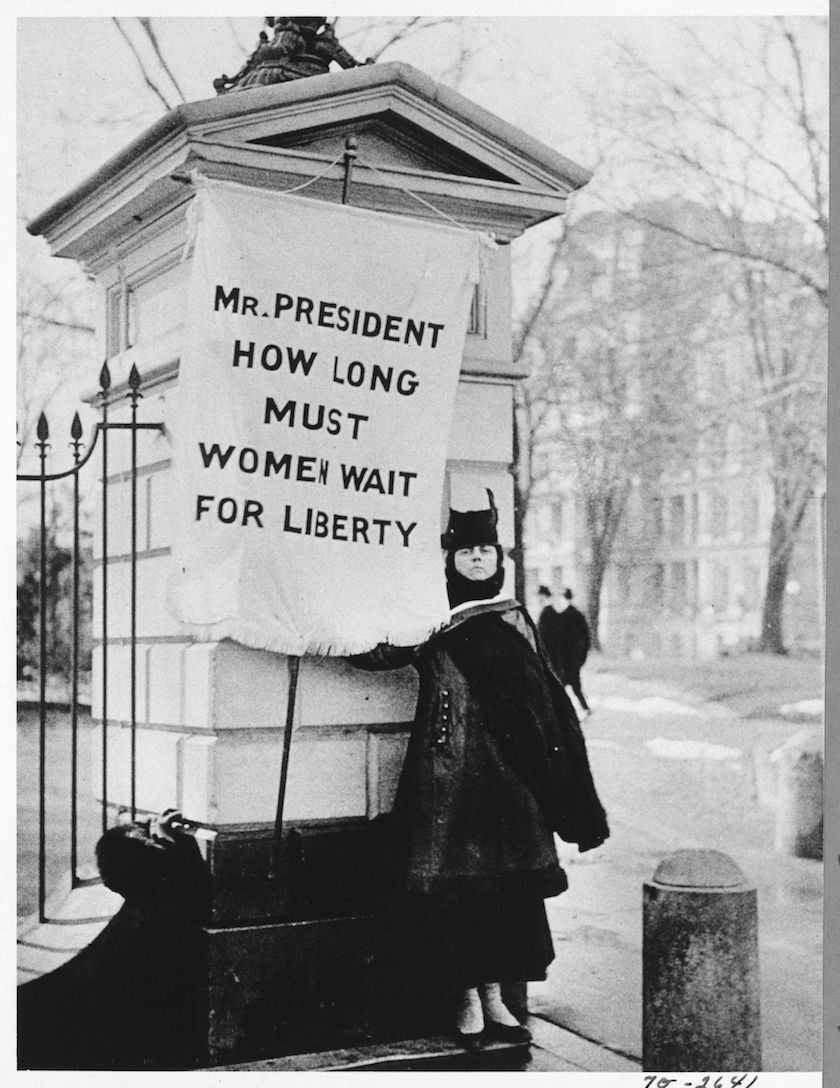
Women begin to acquire jobs in domestic work and companies specifically target women by marketing products that make housework easier. Education is made more accessible to women during this era, prompting them to attend universities and earn degrees. These new roles and freedoms draws many more women to the Suffragette movement.
In 1890, the National Woman Suffrage Association and the American Woman’s Suffrage Association merge becoming the National American Woman Suffrage Association.
In 1912, Alice Paul and Lucy Jones are appointed to the National American Woman Suffrage Association's (NAWSA) Congressional Committee. Paul and Jones, both Americans, introduce the more aggressive tactics, such as demonstrations, parades, picketing, and hunger strikes to bring more attention to their cause. These tactics that are introduced were inspired by the British suffrage movement.
Image courtesy of the National Archives
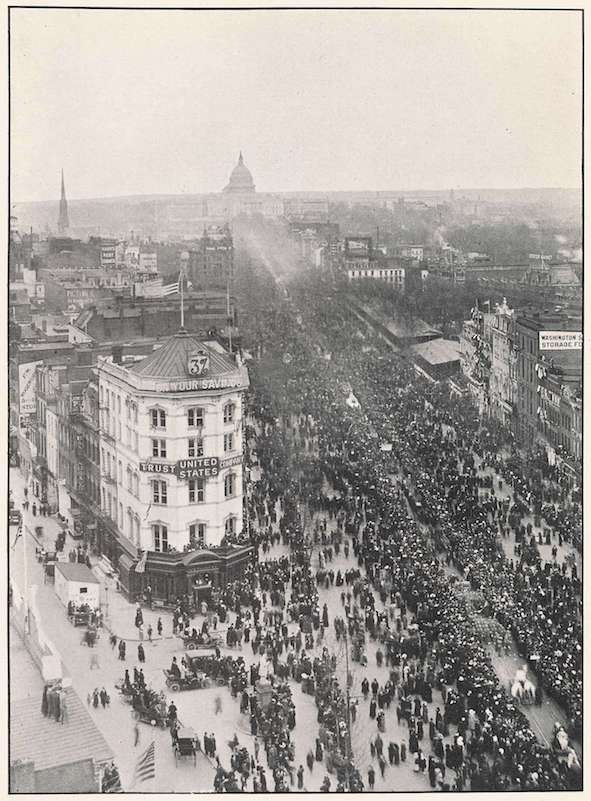
1913 Washington, D.C. - The first march in Washington, D.C. is stragetically organized and takes place a day before President-Elect Woodrow Wilson's Inaugration. Organizers made repeated attempts to secure police protection in preparation for the parade — they even contacted the Secretary of War seeking assistance from the U.S. military. Richard H. Sylvester, Chief of DC Police, had assured organizers that he could manage the situation without the military, but he ultimately failed to control the crowd. Denied police protection, many of the women are assaulted both physically and verbally during the parade. The event gains much attention with spectators watching the march and poor treatment of the protestors sparks immediate outrage. Determined to finish the march, 100 women were hospitilized after the march ended.
The day after the parade, the Senate passes a resolution authorizing the Committee on the District of Columbia to investigate the police’s handling of the incident. The women testify about their experiences—some note the lack of police presence, or officers’ indifference, and some even applaud the Boy Scouts for being more effective at crowd control than the police. Others describe drunken men along with the parade route hooting and jeering at them, blocking their path, and making insulting remarks. The committee determines that protestors had not been protected; and ultimately the DC Superintendent of Police was removed.
Image courtesy of the National Archives.
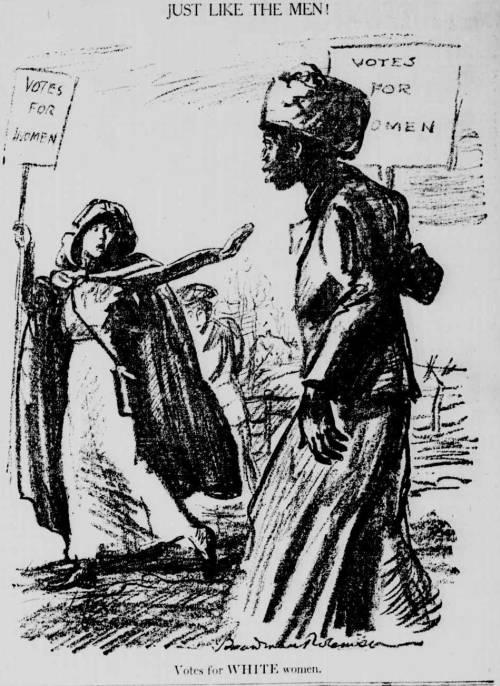
Years after the Civil War had ended, the subject of race within the Suffragette movement had caused a rift between white and Black women. There were some organizations that Black women had founded, including Mary Church Terrell's group, the National Association of Colored Women. National groups, such as the National American Woman Suffrage Association firmly stated in their mission that all women were welcome to the movement and had active members in the association that were Black. The policies of their leaders, though, reflected a different perspective.
In an interview with Alice Paul in 1974, Paul recalls that the “greatest hurdle” in planning the 1913 parade came when the National Association of Colored Women wanted to march in D.C.. Paul knew, though, that southern women and men who were participating in the parade would not agree to march with Black women. A compromise was proposed that the parade would be segregated, where Black women would march in the back of the parade. Some Black women refused to be segregated, one of them being Ida. B Wells. In a defiant act, as the all-white Delegation of Chicago passed, Wells-Barnett emerged from the crowd and joined her delegation.
Political cartoon "Just like the men!" from the New-York tribune, 1913. Cartoon depicts overt racism of a suffragette march in which a Black suffragist being turned away by a white suffragist, with the caption "Votes for WHITE women." Image courtesy of South Central Regional Library Council.
Meet Black Suffragettes Who Fought for the Right to Vote
![]()
1920
The Nineteenth Amendment is ratified. Women are granted the right to vote in the United States of America.
![]()
"The right of citizens of the United States to vote shall not be denied or abridged by the United States or by any State on account of sex." - 19th Amendment of the Constitution
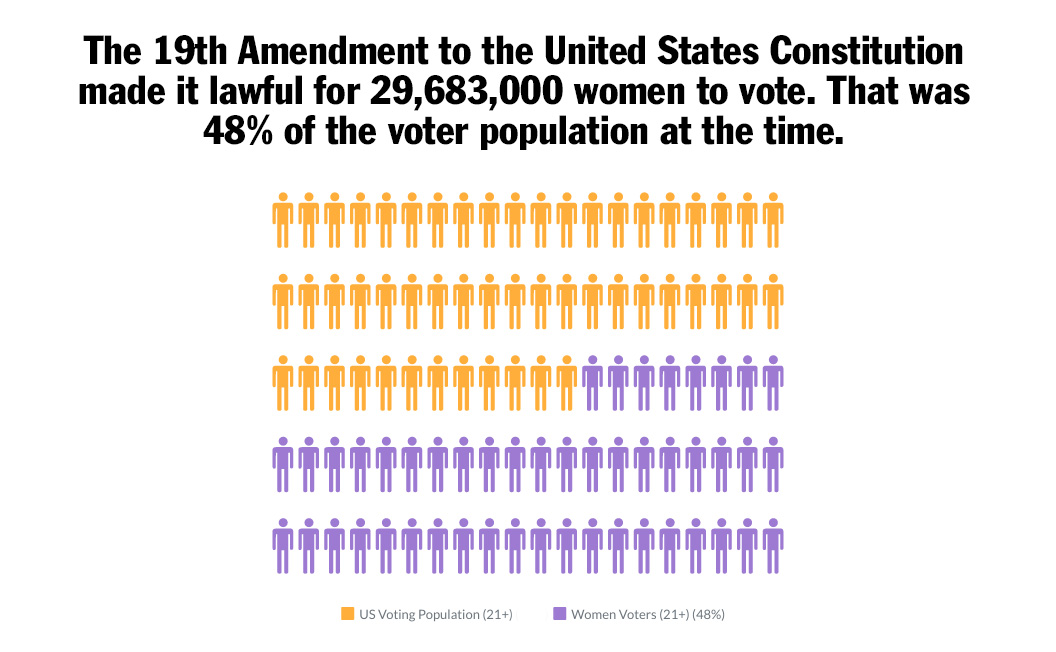
Next: Explore the Indian Citizenship Act
SUPPORT THE ARCHIVE'S WORK
When making a contribution please be sure to select “library archives“ for your gift
designation. We thank you so much for your support!




